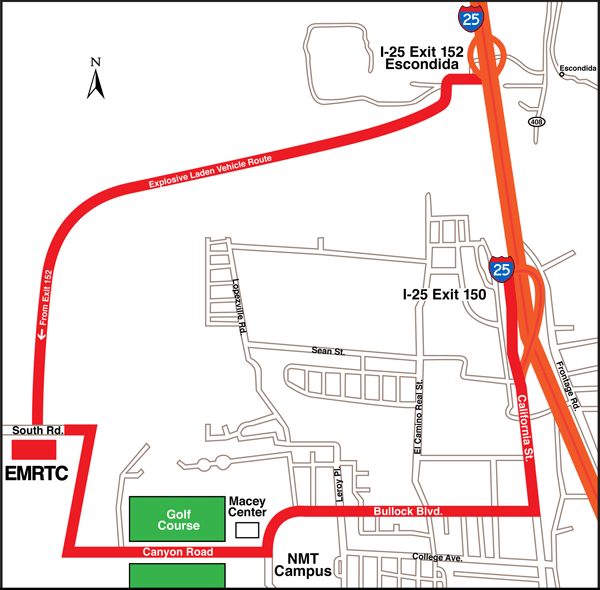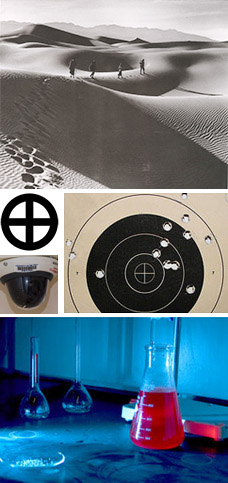
part of this gypsu
m dune field, along with the plants
and animals that have adapted successfully to this
constantly changing environment.At the northern end of the Chihuahuan Desert lies
a mountain-ringed valley, the Tularosa Basin. Rising
from the heart of this basin is one of the world's
great natural wonders-the glistening white sand

s
of New Mexico. Great wave-like dunes of gypsum
sand ha
- ve engulfed 275 square miles of desert here and created the largest gypsum dune field in the world. T
- he dunes, brilliant and white,
- are ever changing. They grow, crest, then slump but always advance. Slowly but relentlessly the sand, driven by strong southwest winds, covers everything in its path. Within the extremely harsh environment o
From Albuquerque International Airport through the town of Socorro to EMRTC
- f the dune field, even plants and animals adapted to desert conditions struggle to survive. Only a f
- ew species of plan for 77 miles.
- ts grow rapidly enough to survive burial by the moving dunes, but several types of small animals have evolved white colorations to camouflage them in the gyp
- sum sand. WhitCalifornia St.
- e Sands National Monument preserves a major part of this gypsum dune field, a
- long with the plants and animals that have adapted successfully to this constantly changing environment.At the northern end of the
- Chihuahuan Desert lies a mountain-ringed valley, the Tularosa Basin
- Turn right(west) onto . Rising f located at a four-way stop sign. Drive past the golf course up and over a hill and then back down past the New Mexico Tech Physical Plant.
- rom the heart of this basin is one of the world's great natural wonders-the glistening white sands of New Mexico. Great wave-like d
unes of gypsum
sand have engulfed 275 square miles of desert
here and c
- reated the largest gypsum dune field in the world. The dunes, brilliant and w
- hite, are ever changing. They grow, crest, then slump but always ad
- vance. Slowly but relentlessly the sand, driven by strong southwest winds, co
- vers everything in its path. Within the extremely harsh environment of the dune field, even plants and animals adapted to desert conditions struggle to survive. Only a few specie
- s of plants grow rapidly eno
- ugh to survive burial by the moving dunes, but several types of small anima
- ls have evolved white colorations to camouflage them in the gypsum sand. White Sands National Monument preserves a major part of thi
- s gypsum dune field,, which curves to the left and becomes Olive Lane.
- along with the plants and animals that have adapted successfully to this constantly changing environment.At the northern end of the Chihuahuan Desert lies a mountain-ri
- nged valley, the Tularosa Basin. Rising from the heart of this basin is one of the world's great natural wonders-the glistening whit

